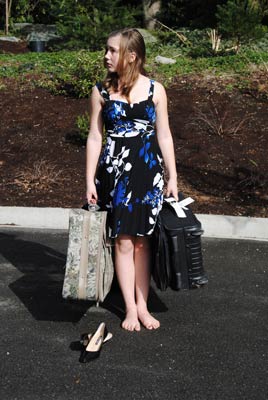All Nonfiction
- Bullying
- Books
- Academic
- Author Interviews
- Celebrity interviews
- College Articles
- College Essays
- Educator of the Year
- Heroes
- Interviews
- Memoir
- Personal Experience
- Sports
- Travel & Culture
All Opinions
- Bullying
- Current Events / Politics
- Discrimination
- Drugs / Alcohol / Smoking
- Entertainment / Celebrities
- Environment
- Love / Relationships
- Movies / Music / TV
- Pop Culture / Trends
- School / College
- Social Issues / Civics
- Spirituality / Religion
- Sports / Hobbies
All Hot Topics
- Bullying
- Community Service
- Environment
- Health
- Letters to the Editor
- Pride & Prejudice
- What Matters
- Back
Summer Guide
- Program Links
- Program Reviews
- Back
College Guide
- College Links
- College Reviews
- College Essays
- College Articles
- Back
Small Spaces MAG
I absolutely cannot stand closed-in spaces. I discovered this fact when I was just five years old and got trapped in a bathroom stall. The stall door reached from the floor to the ceiling, and I remember feeling as though the walls were closing in on me and the stall was becoming smaller and smaller. I started to hyperventilate. I remembered screaming and crying hysterically, and when I was finally able to open the door, I knew I would never be able to think of small, crowded spaces the same way again.
Some say that claustrophobia is not a real thing, but it is for me. As I grew up, some activities caused me so much anxiety that I could not enjoy them. I learned to avoid situations that could make me freak out and make my phobia noticeable. I became ashamed of it, always wanting to hide it. If I was not able to avoid a small space, I did what I could to keep my anxiety in check and mostly unnoticed. That is – until middle school.
In my sixth-grade theater class, we did a unit on Japanese theater, and made masks, like those that Japanese actors wore in shows. In order to make one, other students would put plaster on our faces as we breathed through a straw. I told my teacher that I was uncomfortable doing this, but she asked me to try. As the plaster covered my entire face, I began to hyperventilate. With just a straw to breathe through, I felt like I couldn't get enough air. Gasping, I tore the mask from my face and broke down crying. From then on, my claustrophobia worsened and became part of my daily life.
Whenever I had the option of taking the stairs or the elevator, I would choose the stairs. I preferred to stand on the edge of crowds. I would look outside or up at the sky a lot. When talking to friends, I avoided facing them, making sure I had open space in front of me. It seemed that did all these things subconsciously.
I did not realize how much claustrophobia affected my life until eighth grade, when my class was discussing death and what we thought would be the worst way to die. Many of the answers – like being shot or drowning – kept being repeated, until it was my turn. I said that being buried alive would be the worst way to die. When people asked why, I told them that it is not only a drawn-out death, but it also includes my worst fear: small spaces.
I have tried to explain to others how I feel as an episode of claustrophobia begins, but I guess it's hard to understand. My heart starts to race, and all of a sudden I am not able to breathe correctly. My breathing becomes ragged as I gasp for air, and I get dizzy and start seeing black spots.
Recently, when my school had a tornado drill, 50 girls squeezed into a small bathroom. The room quickly became overheated, and my heart rate spiked. The only way to calm myself was to close my eyes and focus on my breathing. I breathed in for five seconds and exhaled slowly. I repeated this relaxation technique until the drill ended.
When others discover my phobia, they say it explains a lot about why I act the way I do. I am never in the middle of the dance floor, I always look out of windows in class, I prefer being outside, and I don't like it when people get too close to my face. If I even think about these stressful situations, I can feel myself start to panic.
My phobia is still with me, but I've learned that I can control it by distracting myself and pushing the anxiety to the back of my mind.

Similar Articles
JOIN THE DISCUSSION
This article has 0 comments.
